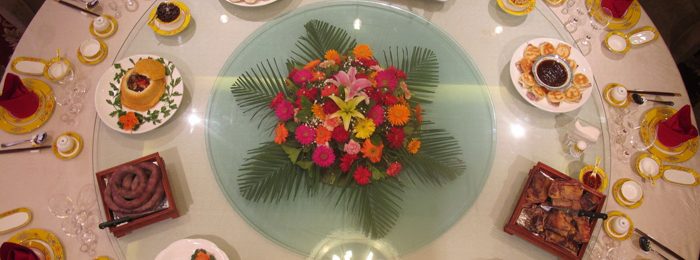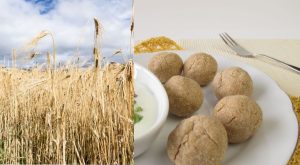Tibetan Cuisine
Tibetan cuisine is not renowned for its spices and variety, but it is hearty and healthy and sustains those living on the high plateau. Most Tibetan dishes include generous portions of dairy and meat, but these days more and more young people eat vegetarian. Here are some of our most common dishes.
Tsampa
Tsampa is the unofficial food of the Tibetan people. It is made from dried barley flour, which is then added to a cup of butter tea. The flour and tea are mixed together to form a ball of dough. Some like to add bits of dry cheese as well as sugar to the dough. No trip to Tibet is complete without sampling tsampa.
Butter Tea
Tibetans are famous for their heavy yak butter tea. Nomads drink cup after cup of butter tea daily, as it is filling and keeps them warm. In some regions, a bit of salt is added to the tea. While many foreigners balk at the idea of drinking butter tea, it is tasty if you think of it as a kind of soup.
Milk Tea
Tibetans in central Tibet enjoy drinking sweet milk tea, known as ja ngarmo. The sweet tea is similar to British milk tea, and many visitors to Tibet enjoy the drink. However, Tibetans in the eastern regions of Amdo and Kham prefer plain milk tea or salty milk tea.
Momo
Momos, or dumplings, are every Tibetan’s favorite food. Momos are typically made on special occasions, and family and friends pitch in to make them together. Momos can easily be found at most restaurants, and there are many kinds, including potato momos, mutton momos, vegetable momos, and others. Tibetans dip the momos into spicy chili paste for added flavor and wash them down with soup broth.
Thukpa
Thukpa is a noodle soup typically eaten for lunch or dinner. It includes thick noodles, boiled spinach, and bits of mutton, pork, or yak beef. One popular version of this soup, called tenthuk, uses small chunks of pasta made from pulled noodles. A large bowl of this warm, filling noodle soup is tasty on a cold night.
Yak Yogurt
Tibetan nomads make yogurt (sho) from yak milk. In the summer, it is easy to buy buckets of fresh yogurt directly from the nomads. Restaurants also offer small bowls of yogurt, which can be eaten plain, with a bit of sugar, or mixed with rice.
Tibetan Bread
Tibetans make all sorts of bread. The most common form of bread (pale) is small, thick, and round. Another popular kind of bread, tingmo, is small, round, and soft. Bread is typically eaten with all meals. Special, crispy bread (kapse) is made during the Tibetan New Year.
Beef and Potatoes
A popular dish in Tibetan restaurants is shamdre, which includes beef, rice, and potatoes. The meal is hearty and filling. Tibetans love potatoes and often enjoy them with a bit of chili.
Yak Jerky
Tibetans eat a lot of meat, including yak beef, mutton, and pork. Traditionally, the meat is dried and preserved. It is then cut up and tossed into stews or eaten straight off the bone. Don’t be surprised if nomads invite you into their tent, hand you a knife, and give you a big bowl of dried yak meat still on the bone!
Droma Root
Droma is a wild-harvested root found on the plateau grasslands. Served atop a plate of rice and sprinkled with a little sugar and melted butter, droma root is chewy and tasty. Its flavor is similar to sweet potatoes or parsnips. Highly nutritious, the small, red root is full of iron, protein, and antioxidants.
Mushrooms
In the summer, wild mushrooms grow on the plateau grasslands. Nomads pick these mushrooms while herding yaks and sheep, and then sell them along the road or in town. Mushrooms can be used as momo filling, or their stems can be plucked, a little bit of salt and butter added, and then roasted over the fire. The results are delicious!
Vegetarian
Now that an increasing variety of food is available in Tibet, eating vegetarian has become an option. While most Tibetans continue to eat a traditional meat diet, many young Tibetans believe that eating vegetarian is in line with their Buddhist beliefs. In the cities, there are many vegetarian options (including Nepali/Indian/Sichuan food), but outside the city, travelers may want to bring some peanut butter as a supplement.








